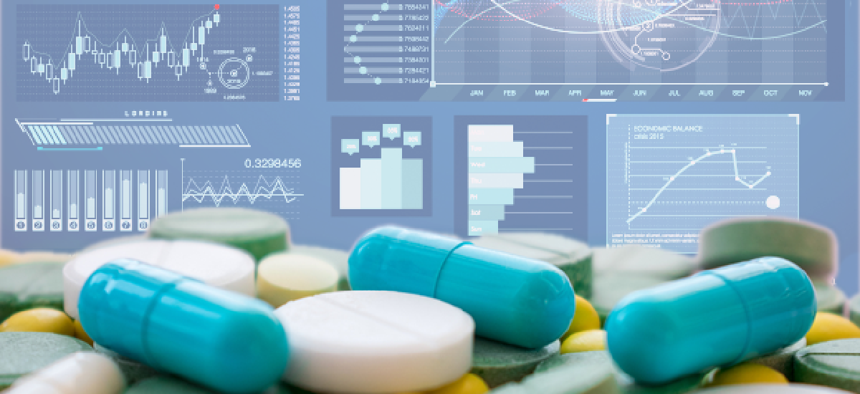Battling the opioid crisis with technology


Connecting state and local government leaders
State and local governments are incorporating both emerging and established technologies into their crisis response plans to fight the opioid epidemic.
The Senate recently passed the final version of a bill that outlines actions to combat the opioid crisis. The bill comes a year after President Donald Trump declared the crisis a “national emergency,” and the proposed plan includes suggestions to create, expand and reauthorize programs and policies across almost every federal agency. Public health professionals have lauded this package for its focus on treatment and expanded options for recovery.
This attention from the federal government comes at a critical time. Drug overdoses claimed 72,000 lives last year, a record number in the United States. This number surpasses the peak yearly death totals from HIV, guns or car crashes. In response, the Department of Health and Human Services released over $1 billion in opioid-specific grants to the states to combat this crisis, supporting a federal opioid strategy launched last year.
In the past few years, states also have applied their own strategies. For example, Massachusetts Gov. Charlie Baker signed a new bill aimed at combatting opioids and speeding the shift to electronic prescriptions. Other localities are finding ways to tap state and federal funding, establish public-private partnerships and introduce new, targeted legislation. Because of actions such as these, several states have seen a reduction in reported overdoses, emergency room visits and ambulance calls.
The common theme underpinning this progress at the state level is technology. Local governments are incorporating both emerging and established technologies into their crisis-response plans. Setting up systems such as hotlines, interactive maps and prescription monitoring systems have achieved significant success in alleviating the issue.
As communities await the roll out of federal assistance, here are some examples of how state and local governments are using technology to monitor and prevent overdose and addiction:
Hotlines and substance abuse contact centers. Illinois and Massachusetts are using cloud technology to augment substance-use call centers. Concerned parents, friends, caseworkers and substance users in those states can access a portal, answer a few short questions and receive real-time detailed information on the most appropriate resources and/or treatment facilities based on their particular location, health insurance coverage and substances they are using.
Both the Illinois portal and the Massachusetts portal were implemented to assist call centers operated by Boston-based Health Resources in Action. The underlying software is cloud-based, which means it can be set up and configured quickly at a fraction of the cost and time of traditional portal implementations. These portals don’t necessarily replace the call center but rather provide additional channels for assistance.
Medical records and data analytics. Some states, like Massachusetts, are holding prescribers more accountable through electronic records. In the bill signed by Gov. Baker, all prescribers must convert to electronic prescriptions by 2020. Hospital staff is also required to readmit a patient battling opioid addiction into an inpatient service or provide a referral to an internal or community-based treatment program when a patient expresses interest.
Once all records are electronic, Massachusetts will be equipped to implement a prescription drug monitoring program, which is designed to help identify signs of drug abuse. The program, using technology such as machine learning and data analytics, is built to identify suspicious patterns of prescriptions of controlled substances, including opioids. PDMPs connect electronic health record vendors, pharmacy benefit managers, pharmacies, clinicians and post-acute care programs and have been found to improve prescribing behaviors, decrease patients' visits to multiple providers and a reduce substance abuse treatment admissions.
Geospatial mapping and tracking. The Drug Enforcement Agency and Centers for Disease Control and Prevention are encouraging communities to use GIS maps to locate their vulnerabilities. Officials and community members in Cincinnati, Ohio, for example, came together to launch the "Heroin Tracker," a cloud-based dashboard used to spot trends in opioid-related emergencies.
Each night, the Tracker is updated using 911 call history and public safety dispatch data to identify hotspots, allowing health department officials and nonprofit caretakers to respond to crises quickly, anticipate spikes in drug activity and organize patrol units. This is one step in Cincinnati’s Smart City strategy, and officials plan to establish additional public dashboards for other health and environment hazards.
Innovations like these are just the tip of the iceberg. At Brigham and Women’s Hospital in Boston, the emergency department piloted the use of capsules embedded with ingestible wireless sensors to measure patients’ prescription opioid use. Once digested, the pill emits a radio signal that connects to a wearable device worn by the patient. This device connects to an app where health care providers can view the drug amount in the patient’s system.
While progress has been made through technology, there’s still work to be done to seamlessly integrate the innovations into the healthcare system. State legislators, community nonprofits, clinicians and the tech industry must continue to work together to arrive at lasting solutions that can effectively mitigate our nation’s most pressing health crisis.
NEXT STORY: OMB looks to refresh data center policy




